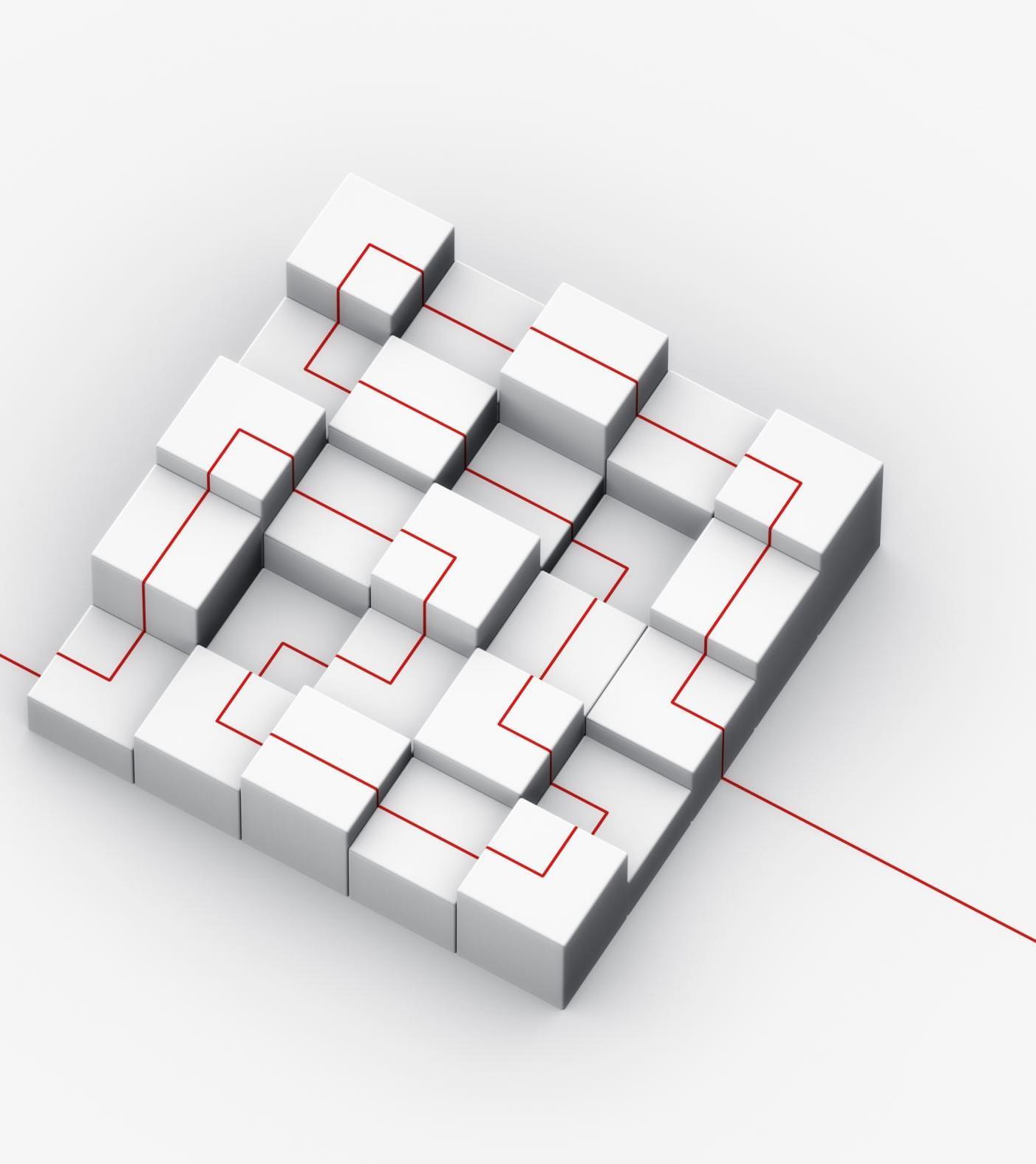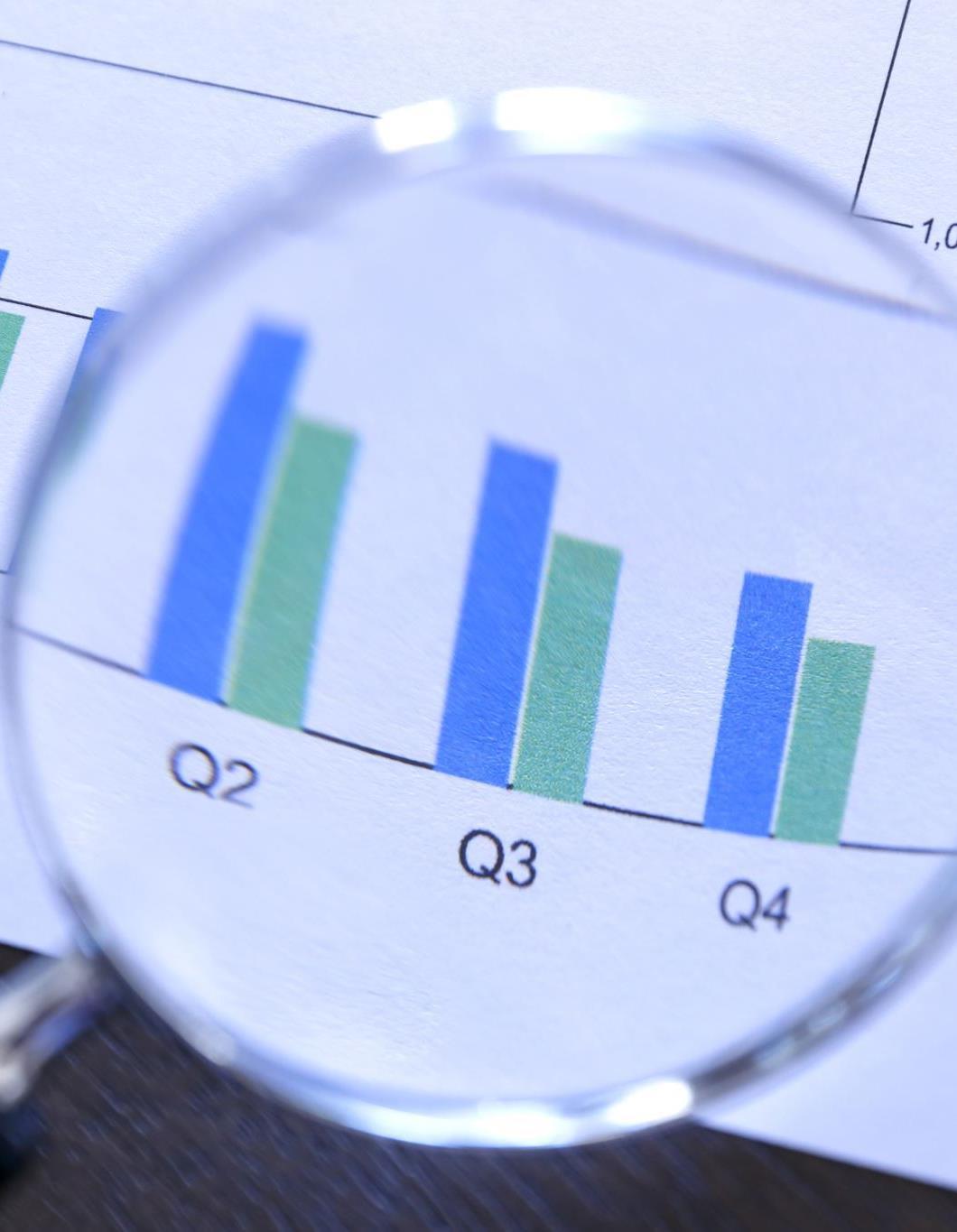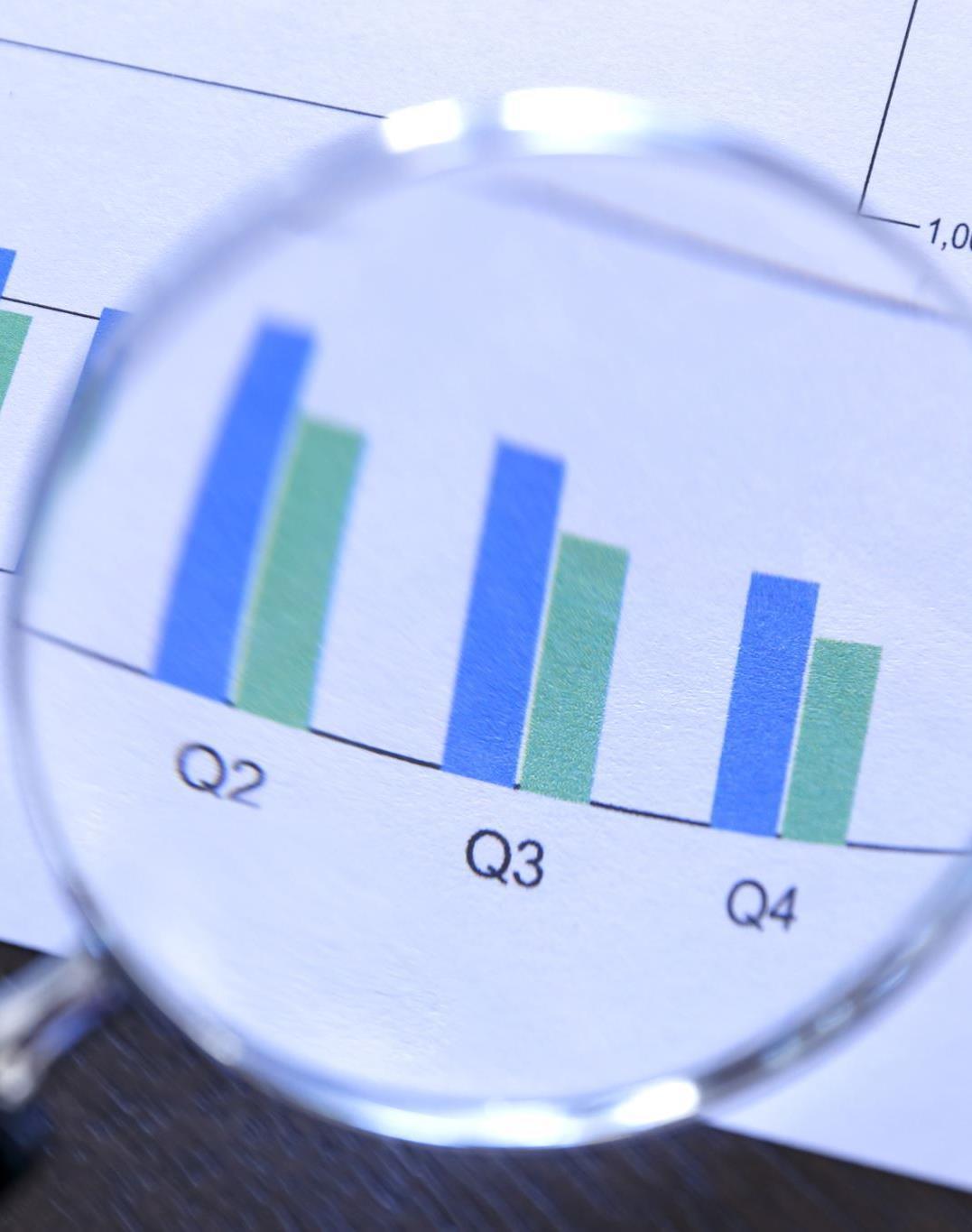OTHM LEVEL 5 DIPLOMA IN HEALTH AND
SOCIAL CARE MANAGEMENT


Research Methods in Health and Social Care





LO-1:-Understand approaches to research in health and social care.
LO-02:-Be able to plan a research project relevant to a health and social care setting
LO-03:-Be able to carry out a research project relevant to a health and social care setting
LO-04:-Be able to make informed recommendations
• 1.1 Explain the function of research in health and social care.
• 1.2 Evaluate types of research methodology.
• 1.3 Describe methods of gathering data.
• 1.4 Describe tools to analyse and present data.
• 1.5 Explain how to assess the validity and reliability of data in research.
• 1.6 Analyse the importance of the validity and reliability of data used within research.

➢2.1 Determine a research topic in a chosen area of interest.
➢2.2 Develop the aims and objectives of the research project.
➢2.3 Explain ethical considerations that apply to the area of the research project.
➢2.4 Complete a literature review of chosen area of research.



• 3.1 Develop relevant research questions.
• 3.2 Formulate a detailed plan for the research project.
• 3.3 Determine appropriate research methods for the research project.
• 3.4 Conduct the research using identified research methods.

• 4.1 Analyse the data and present findings.
• 4.2 Formulate recommendations related to the chosen research topic
• 4.3 Reflect how own research findings substantiateinitial literature review.
• 4.4 Make recommendations related to area of research.
• 4.5 Identify potential uses for the research findings within practice.



• Commanding Verb is Explain which means:-Make something clear to someone by describing or revealing relevant information in more detail.
• The function of research in health and social care is to gather evidence, analyze data, and generate new knowledge to improve the quality of care and support provided to individuals.
• Research helps in understanding health and social care needs, identifying effective interventions and treatments, and developing best practices.
• It also plays a crucial role in evaluating the outcomes of different care approaches, shaping health policies, and addressing societal issues related to health and social care.
• Additionally, the research contributes to the advancement of medical and social sciences, leading to innovations and improvements in healthcare delivery and social support systems.


• Commanding verb is Evaluate which means:- Consider the strengthsand weaknesses, arguments for and against and/or similarities and differences. The writer should then judge the evidence from the different perspectives and make a valid conclusion or reasoned judgement. Apply current research or theories to support the evaluation when applicable.
• When engaging in research, it is essential to thoroughly assess a variety of research methodologies to determine the most suitable approachfor the study.
• These methodologies include qualitative research, which focuses on understanding human behavior and experiences through methods such as interviews and observations; quantitative research, which involves the collection and analysis of numerical data to identify patterns and relationships;
• mixed-methods research, which combines both qualitative and quantitative approaches to gain a comprehensive understanding of the research topic; action research, which emphasizes collaboration between researchers and practitioners to address real-world problems; and case study research, which involves an in-depth exploration of a specific case or cases to gain insights into a particular phenomenon. By carefully considering these methodologies, researchers can select the most effective approach to address their research questions and objectives.

• Commanding verb is Describe which means:-Provide an extended range of detailed factual information about the topic or item in a logical way.
• The learner need to explain various data collection methods,its importance and its DiagrammaticPresentation: Graphical Presentation of Data in Statistics,Tabular Ways of Data Presentation and Analysis etc should be mentioned.

• Commanding verb is Describe which means :Provide an extended range of detailed factual information about the topic or item in a logical way.
• The tools and methods used to analyze and present data in research studies encompass a wide range of techniques. techniques such as regression analysis, factor analysis, cluster analysis, and various types of charts and graphs are commonly employed to present the findings of the research study.



1.5 Explain how to assess the validity and reliability of data in research.

• Commanding verb is explain which means:-Make something clear to someone by describing or revealing relevant information in more detail.
• Assessing the validity and reliability of data in research involves several key steps. Validity refers to whether the data accuratelymeasures what it is intended to measure, while reliability pertains to the consistency of the data over time and across different conditions.
• To assess validity, researchers can use various methods such as content validity, criterion-relatedvalidity, and construct validity. Content validity involves ensuring that the data covers all relevant aspects of the concept being measured.

• Criterion-related validity involves comparing the data to external criteria or measures. Construct validity involves examining the extent to which the data aligns with theoretical constructs.
• Reliability can be assessed through methods such as testretest reliability, inter-rater reliability, and internal consistency. Test-retest reliability involves measuring the consistency of data over time by administering the same test to the same group of individuals at two different points in time. Inter-rater reliability involves ensuring consistency in data when different raters or observers are involved.
• Internal consistency measures the extent to which different items within a data measure are consistent with each other. assessing the validity and reliability of data in research involves a thorough examination of the methods used to collect data and the consistency and accuracy of the data in measuring the intended concepts.

1.6 Analyse the importance of the validity and reliability of data used within research.
• Commanding verb is Analyse which means:Break the subject or complex situation(s) into separate parts and examineeach part in detail;
• identify the main issues and show how the main ideas are related to practice and why they are important. Reference to current research or theory may support the analysis.
• The validity and reliability of data used in research are crucial for ensuring the accuracy and credibility of the findings.



• Validity refers to the extent to which a research study accurately measures or reflects what it is intended to measure or reflect. It ensures that the data truly represents the phenomenon being studied.
• On the other hand, reliability refers to the consistency and stability of the data over time and acrossdifferent conditions. Reliable data produces consistent results when the research is repeated or under similar conditions.
• Both validity and reliability are essential for drawing meaningful conclusions and making informed decisions based on research findings.

2.1
a research topic in a chosen area of interest.


• Commanding verb is determine which means :Settle/concludean argument/questionas a result of investigationor by referring to an authority.
• Please select a research topic that is closely aligned with your area of interest and has the potential for in-depth investigationand analysis within your field of study.
• This topic should be significant and offer opportunities for meaningful explorationand research.


• Commanding verb is Develop which means :Elaborate, expand or progressan idea from a starting point, building upon given information.
• The research project aims and objectives should be clearly defined and aligned with the overall purpose of the research.
• The aims should reflect the overarching goals of the study, while the objectives should be specific, measurable, achievable, relevant, and time-bound (SMART). It's important to ensure that the aims and objectives are well-defined to guide the research process effectively.


2.3 Explain ethical considerations that apply to the area of the research project.

• Commanding verb is explain which means:Make something clear to someone by describing or revealing relevant information in more detail.
• Please provide a thorough and detailed explanation of the ethical considerations that are relevant to the research project, including any potential impact on human subjects, data privacy, and any other ethical concerns that may arise.
• Commanding verb is complete which means:Ensure something is finished with all of its parts.
• Conduct an extensive and systematicreview of existing literature within the selected area of research. Summarize and analyze the current body of knowledge, identifying strengths and limitations in the existing research.
• Doing so lets you pinpoint specific gaps and areas that warrant further exploration and investigation.




• Commanding verb is develop which means:Elaborate, expand or progress an idea from a starting point, building upon given information.
• In order to carry out thorough and effective research, it is essential to carefully formulate research questions that are directly related to the topic under investigation.
• These questions should be designed to uncover valuable insights and contribute to a deeper understanding of the subject matter.

• Commanding verb is Formulate which means :- To devise or develop an idea or concept in a concise and systematicway.
• Please provide a well-structured and detailed plan that thoroughly outlines the different stages and components of the research project.

• Commanding Verb is Determine which means :- Settle/conclude an argument/question as a result of investigation or by referring to an authority
• In order to successfully complete the research project, it is imperative to thoroughly assess and choose the research methods that best align with the specific objectives and goals of the project.
• The selection process should involve a detailed examination of various research methodologies, considering factors such as feasibility, ethical considerations, and the potential to yield meaningful results.
• Additionally, it is essential to ensure that the chosen methods are well-suited to address the research questions and provide valuable insights into the subject matter.
• By carefully considering these factors, the research project can be conducted with precision and yield credible and valuable findings.




• Commanding verb is conduct which means:-Organiseand perform a particular activity.
• Please ensure that the research for this project is conducted according to the specific research methods previously identified and approved.

• Commanding verb is Analyse which means:-Break the subject or complex situation(s) into separate parts and examine each part in detail; identify the main issues and show how the main ideas are related to practice and why they are important. Reference to current research or theory may support the analysis.
• Please conduct a comprehensive analysis of the dataset using suitable statisticalmethods and tools, ensuring that you thoroughly examine the data for meaningful insights.
• Once the analysis is complete, please compile a detailed report that clearly presents your findings, including any significant trends, patterns, or correlations identified during the analysis.


related to the chosen research topic .

• Commanding verb Formulate which means :-To devise or develop an idea or concept in a concise and systematicway.
• Generate specific and actionable recommendations that are closely tied to the chosen research topic, taking into consideration the key findings and implications of the research.

4.3 Reflect how own research findings substantiate initial literature review.

• Commanding verb is reflect :-Consciously contemplate, appraise or give balanced consideration to an action or issue.
• It is crucial to allocate a sufficient amount of time to thoroughly assess and analyze how the findings of your research align with and substantiate the initial literature review that was conducted.
• This involves carefully examining how your research results are consistent with the existing body of literature, providing further evidence or insights into the topic.



• Commanding verb recommendation:- a suggestion or proposal as to the best course of action, especially one put forward by an authoritative body.
• conducting research in a specific area and seeking recommendations directly related .Research recommendations play a crucial role in guiding scholars and researchers toward fruitful avenues of exploration.
• In an era marked by rapid technologicaladvancements and an ever-expanding knowledge base, refining the process of generating research recommendations becomes imperative.
4.5 Identify potential uses for the research findings within practice.
• Commanding verb is Identify which means:Ascertain the origin, nature or definitive characteristics of something.
• Please meticulously evaluate and thoroughly explore the potential practical applications and consequences of the research findings in realworld scenarios.




• Research refers to a search for knowledge. It also defines research as a scientific and systematic search for pertinent information on a specific topic.
• Research is the art of scientific investigation. Research is a careful investigationor inquiry, especially through the search for new facts in any branchof knowledge.
• Some people consider research as a movement, a movement from the known to the unknown. It is a voyage of discovery. We all possess the vital instinct of inquisitiveness, for when the unknown confronts us, we wonder, and our curiosity makes us probe and attaina full and fuller understanding of the unknown.

➢ “Research comprises defining and redefining problems, formulating hypotheses or suggested solutions; collecting, organizing, and evaluating data; making deductions and reaching conclusions; and at last, carefully testing the conclusions to determine whether they fit the formulating hypothesis.”-CliffordWoody
➢ “The manipulation of things, concepts, or symbols for the purpose of generalizing to extend, correct, or verify knowledge, whether that knowledge aids in the constructionof theory or in the practice of an art.” D. Slesinger and M. Stephenson(Encyclopediaof Social Sciences)

The research aims to discover answers to questions by applying scientific procedures. The research's main aim is to find the hidden truth that has to be found.
➢ To gain familiarity with a phenomenon or to achieve new insights into it.
➢ To accurately portraythe characteristicsof a particular individual, situation, or group.
➢ To determine the frequency with which something occurs or is associatedwith something else.
➢ To test a hypothesis of a causal relationship between variables.


Descriptive vs. Analytical
Applied vs. Fundamental
Quantitative vs. Qualitative
Conceptual vs. Empirical


➢ Descriptive research includes surveys and fact-finding inquiries of different kinds. The major purpose of descriptive study is to describe the state of affairs as it currently exists.
➢ In social science and business research, we often use Ex post facto research for descriptive research studies.
➢ The main characteristic of this method is that the researcher has no control over the variables; he can only report what has happened or what is happening.
➢ Most ex post facto research projects are used for descriptive studies in which the researcher seeks to measure such items as, for example, frequency of shopping, preferences of people, or similar data.
➢Ex post facto studies also include attempts by researchers to discover causes even when they cannot control the variables.
➢The research methods utilized in descriptive analysis are survey methods of all kinds, including comparative and correlational methods.
➢In analytical research, on the other hand, the researcher has to use facts or information already available and analyze these to make a critical evaluation of the material.
➢Research can be applied or fundamental (to basic or pure) research. Applied research aims to solve an immediate problem facing a society or an industrial/business organization.
➢In contrast, fundamental analysis mainly concerns generalizations and theory formulation. "Gathering knowledge for knowledge’s sake is termed ‘pure’ or ‘basic’ research.”



➢Research concerning some natural phenomenon or pure mathematics are fundamental research examples. Similarly, research studies regarding human behavior carried on intending to make generalizations about human behavior are also examples of basic research.
➢Research aimed at certain conclusions facing a concrete social or business problem is an example of applied research.



➢ Research to identify social, economic, or political trends that may affect a particular institution, copy research(research to find out whether certain communications will be read and understood), or marketing or evaluation research are examples of applied research.
➢ The central aim of applied research is to discover a solution for some pressing practical problem.
➢ Basic research is directed towards finding information with a broad application base, thus adding to the already existing organized body of scientific knowledge.
• Quantitative research is based on the measurement of quantity amount. Qualitative research, on the other hand, is concerned with qualitative phenomena relating to or involving quality or kind.
• For instance, when we are interested in investigating the reasons for human behavior (i.e., why people think or do certain things), We often talk of ‘Motivation Research’, an important type of qualitative research.
• This type of research aims at discovering the underlying motives and desires using in-depth interviews for the purpose.
• Other techniques of such analysis are word association tests, sentence completion tests, story completion tests, and similar projective techniques.
• Attitude or opinion research, i.e., research designed to determine how people feel or think about a particular subject or institution, is also qualitative research.




• Qualitative research is especially important in the behavioral sciences, where the aim is to discover the underlying motives of human behavior. Through such research, we can analyze the factors that motivate people to behave in a particular manner or make people like or dislike a specific thing.
• Applying qualitative research in practice is a relatively difficult job; therefore, while doing such research, one should seek guidance from experimental psychologists.

• Conceptual research relates to some abstract idea or theory. It is generally used by philosophers and thinkers to develop new concepts or to reinterpret existing ones.
• On the other hand, empirical research relies on experience or observation alone, often without due regard for system and theory. It is databased research, coming up with conclusions that should be verified by observation or experiment. We can also call it an experimental type of research.



• In such research, it is necessary to get at facts firsthand, at their source, and actively do certain things to stimulate the production of desired information.
• The researcher must first provide a working hypothesis or guess the probable results of such research. He then works to get enough facts (data) to prove or disprove his theory. He then sets up experimental designs which he thinks will manipulate the persons or the materials concerned to bring forth the desired information.



• The researcher must first provide a working hypothesis or guess the probable results of such research.
• He then works to get enough facts (data) to prove or disprove his theory.
• He then sets up experimental designs which he thinks will manipulate the persons or the materials concerned to bring forth the desired information.

• Research is then characterized by the experimenter’s control over the variables under study and his deliberate manipulation of one of them to study its effects.
• Empirical research is appropriate when proof is sought that certain variables affect other variables somehow.
• Today, evidence gathered through experiments or empirical studies is considered the most powerful support possible for a given hypothesis.



• All other types of research are variations of one or more of the above-stated approaches, based on the purpose of research, the time required to accomplish research, the environment in which research is done, or some other similar factor.
• From the point of view of time, research is either one-time or longitudinal. In the former case, the research is confined to a single period, whereas in the latter, the research is done over several periods. Research can be field-setting, laboratory, or simulation research, depending upon the environment in which it is to be carried out.

• Research can also be classified as conclusion-oriented and decision-oriented. While doing conclusion-oriented research, a researcher is free to pick up a problem, redesign the inquiry as he proceeds, and is prepared to conceptualize as he wishes.
• Decision-oriented research is always for the need of a decision-maker, and the researcher, in this case, is not free to embark upon research according to his inclination.
• Operations research is an example of decision-oriented research since it is a scientific method of providing executive departments with a quantitative basis for decisions regarding operations under their control.


DEFINING A RESEARCH PROBLEM
EXTENSIVE LITERATURE SURVEY
DEVELOPMENT OF WORKING HYPOTHESIS
PREPARATION OF RESEARCH DESIGN
DETERMINING SAMPLE DESIGN
COLLECTION OF DATA
EXECUTION OF THE PROJECT
ANALYSIS OF DATA
HYPOTHESIS TESTING
GENERALISATION AND INTERPRETATION
PREPARATION OF REPORT
• There are two types of research problems, viz., those which relate to states of nature and those which relate to relationships between variables. At the very outset, the researcher must single out the problem he wants to study, i.e., decide the general area of interest or aspect of the subject matter he would like to inquire into. Initially, the problem has been stated broadly, and then the ambiguities.
• The formulation of a general topic into a specific research problem, thus, constitutes the first step in a scientific enquiry.


• Two steps are involved in formulating the research problem, viz., understanding the situation thoroughly and rephrasing the same into meaningful terms from an analytical point of view.
• The best way to understandthe problem is to discuss it with colleagues or those with expertise
• In an academic institution, the researcher can seek help from a guide who is usually experienced and has several research problems in mind. Often, the directory puts forth the situation in general terms, and it is up to the researcher to narrow it down and phrase the problem in operational terms.


• After this, the researcher rephrases the problem into analytical or functional terms, i.e., to put the problem in as specific terms as possible.
• In private business units or governmental organizations, the problem is usually earmarked by the administrative agencies with whom the researcher can discuss how the problem originally came about and what considerations are involved in its possible solutions.
• The researcher must, at the same time, examine all available literature to get himself acquainted with the selected problem.
• He may review two types of literature—the conceptual literature concerning the concepts and theories and the empirical literature consisting of earlier studies similar to the one proposed.
• The basic outcome of this review will be the knowledge as to what data and other materials are available for operational purposes, which will enable the researcher to specify his research problem in a meaningful context.
• Formulating or defining a research problem is a step of greatest importance in the entire research process.
• The issue to be investigated must be defined unambiguously, which will help discriminate relevant data from irrelevant ones. Care must, however, be taken to verify the objectivity and validity of the background facts concerning the problem.
• ProfessorW.A. Neiswangercorrectlystatesthat in Research Methodology:An Introduction, the statement of the objective is of basic importancebecause it determines the data which are to be collected, the characteristicsof the data which are relevant, relations which are to be explored, the choice of techniques to be used in these explorationsand the form of the final report. If there are certainpertinent terms, the same should be clearly defined along with the task of formulating the problem.
• Formulationof the problem often follows a sequential patternwhere several formulations are set up, each formulation more specific than the preceding one, each phrased in more analyticalterms, and each more realistic regarding the available data and resources.


• Once the problem is formulated, a summary of it should be written down. It is compulsory for a research worker writing a thesis of the topic and submit it to the necessary Committee or the Research Board for approval.
• At this juncture, the researcher should conduct an extensive literature survey on the problem. For this purpose, abstracting and indexing journals and published or unpublished bibliographies are the first place to go.


• Academic journals, conference proceedings, government reports, books etc. must be tapped depending on the nature of the problem.
• In this process, it should be remembered that one source will lead to another. The earlier studies, if any, which are similar to the study in hand, should be carefully studied.
• A good library will greatly help the researcher at this stage.

• After an extensive literature survey, the researcher should clearly statethe working hypothesis or hypotheses.
• The working hypothesis is a tentative assumption to determine and test its logical or empirical consequences.
• As such, how research hypotheses are developed is particularly important since they provide the focal point for research.

• They also affect how tests must be conducted in the analysis of data and, indirectly, the quality of data required for the study.
• In most types of research, developing a working hypothesis plays an important role. The hypothesis should be very specific and limited to the investigation because it must be tested.
• The part of the hypothesis is to guide the researcher by delimiting the area of study and to keep him on the right track. It sharpens his thinking and focuses attention on the more important facets of the problem.
• It also indicates the type of data required and the data analysis methods.




➢ How does one go about developing working hypotheses? The answer is by using the following approach:
1. Discussions with colleagues and experts about the problem, its origin and the objectives in seeking a solution.
2. If available, examination of data and records concerning the problem for possible trends, peculiarities and other clues.
3. Review similar studies in the area or studies on similar problems.
4. Exploratory personal investigation involves original field interviews on a limited scale with interested parties and individuals to secure greater insight into the practical aspects of the problem.
• Thus, working hypotheses arise due to prior thinking about the subject, examination of the available data and material, including related studies and the counsel of experts and interested parties.
• Working hypotheses are more useful when statedin precise and clearly defined terms. It may be remembered that occasionally we encounter a problem where we do not need working 14 Research Methodology hypotheses, especially in the case of exploratory or formulating research which does not aim at testing the hypothesis.
• But as a general rule, the specificationof working hypotheses is another basic step in most research problems.


• The research problem having been formulated in clear-cut terms, the researcher will be required to prepare a research design, i.e., he will have to statethe conceptual structure within which research would be conducted.
• The preparation of such a design facilitates research to be as efficient as possible, yielding maximal information. In other words, the function of research design is to provide for the collection of relevant evidence with minimal expenditure of effort, time and money.



• Research purposes may be grouped into four categories, viz.,
(i) Exploration,
(ii) Description,
(iii) Diagnosis,
(iv) Experimentation.
• A flexible research design that provides an opportunity for considering many different aspects of a problem is considered appropriate if the purpose of the research study is exploration. But when the purpose is an accurate description of a situation or an association between variables, the suitable design will minimize bias and maximize the reliability of the data collected and analyzed.

• There are several research designs, such as experimental and non-experimental hypothesis testing.
• Experimental designs can be either informal designs (such as before-and-after without control, after-only with power, or before-andafter with supervision) or formal designs (such as completely randomized design, randomized block design, Latin square design, simple and complex factorial designs), out of which the researcher must select one for his project.


The preparation of the research design appropriate for a particular research problem usually involves the consideration of the following:-
➢The availability and skills of the researcher and his staff
➢Explanation of how selected means of obtaining information will be organized and the reasoning leading to the selection
➢ The time available for research
➢ The cost factor relating to research, i.e., the finance available for the purpose


• All the items under consideration in any field of inquiry constitute a 'universe' or 'population’.
• A complete enumeration of all the items in the 'population' is known as a census inquiry. It can be presumed that in such an inquiry, no element of chance is left when all the items are covered, and the highest accuracy is obtained.
• But in practice, this may not be true. Even the slightest element of bias in such an inquiry will get larger and larger as the number of observations increases.
• Moreover, there is no way of checking the element of bias or its extent except through a resurvey or sample checks.
• Besides, this type of inquiry involves much time, money and energy. Moreover, census inquiry is not possible in practice under many circumstances. For instance, blood testing is done only on a sample basis.
• Hence, we often select only a few items from the universe for our study purposes. The items so selected constitute what is technically called a sample.
• The researcher must decide how to select a sample or what is popularly known as the sample design.
• In other words, a sample design is a definite plan determined before any data are collected for obtaining a sample from a given population. Thus, the plan to select
12 of a Research Methodology:
• An Introduction 15 city's 200 drugstores in a certain way constitutes a sample design.

• Samples can be either probability samples or nonprobability samples. With probability samples, each element has a known probability of being included in the sample, but the non-probability samples do not allow the researcher to determine this probability.
Probability samples are based on
• Deliberate sampling
• simple random
• systematic
• stratified
• cluster/Area sampling.



(i) Deliberate sampling:-
• It also known as purposive or non-probability sampling. This sampling method involves the purposive or deliberate selection of particular units of the universe for constituting a sample representing the universe.
• When population elements are selected for inclusion in the sample based on ease of access, it can be called convenience sampling.
• If a researcher wishes to secure data from gasoline buyers, he may select a fixed number of petrol stations and conduct interviews at these stations.
• This would be an example of a convenience sample of gasoline buyers.
• Such a procedure may sometimes give very biased results, particularly when the population is not homogeneous.
• On the other hand, in judgement sampling, the researcher's judgement is used for selecting items which he considers representative of the population.
• For example, a judgement sample of college students might be taken to secure reactions to a new teaching method.
• Judgement sampling is used quite frequently in qualitative research where the desire happens to be to develop hypotheses rather than to generalize to larger populations.
(ii) Simple random sampling:
• This type of sampling is also known as chance sampling or probability sampling, where every item in the population has an equal chance of inclusion in the sample and each one of the possible samples, in case of a finite universe, has the same probability of being selected.
• For example, if we have to select a sample of 300 items from a universe of 15,000 items, we can put the names or numbers of all the 15,000 items on slips of paper and conduct a lottery.
• Using random number tables is another method of random sampling. Each item is assigned a number from 1 to 15,000 to select the sample. Then, 300 five-digit random numbers are selected from the table.
• To do this, we select some random starting point, and then a systematic pattern is used in proceeding through the table.


• We might start in the 4th row, second column, proceed down the column to the bottom of the table and then move to the top of the next column to the right.
• When a number exceeds the limit of the numbers in the frame, in our case over 15,000, it is passed over and the next number selected that does fall within the relevant range.
• Since the numbers were placed in the table completely randomly, the resulting sample is random.
• This procedure gives each item an equal probability of being selected. In the case of an infinite population, the selection of each item in a random sample is controlled by the same probability, and successive selections are independent of one another.

(iii) Systematic sampling:
• In some instances, the most practical way of sampling is to select every 15th name on a list, every 10th house on one side of a street and so on.
• Sampling of this type is known as systematicsampling. Randomness is usually introduced into this kind of sampling by using random numbers to pick up the unit with which to start.
• This procedure is useful when a sampling frame is available as a list.
• In such a design, the selection process starts by picking some random point in the list, and then every nth element is selected until the desired number is secured.
(iv) Stratifiedsampling:
• If the population from which a sample is drawn does not constitute a homogeneous group, a stratified sampling technique is applied to obtain a representative sample.
• In this technique, the population is stratified into +6many non-overlapping subpopulations or strata and sample items are selected from each stratum.
• If the items selected from each stratum are based on simple random sampling, the entire procedure, first stratification and then simple random sampling, is known as stratified random sampling.
(v) Quota sampling:
• In stratified sampling, the cost of taking random samples from individual strata is often so expensive that interviewers are given a quota to be filled from different strata,
• The actual selection of items for the sample being left to the interviewer's judgement. This is called quota sampling. The quota size for each stratum is generally proportionate to the size of that stratum in the population.
• Quota sampling is thus an important form of non-probability sampling.
• Quota samples generally happen to be judgement samples rather than random samples
(vi) Cluster sampling and area sampling:
• Cluster sampling involves grouping the population and selecting the groups or the clusters rather than individual elements for inclusion in the sample.
• Suppose some departmental store wishes to sample its credit card holders. It has issued its cards to 15,000 customers.
• The sample size is to be kept, say 450. For cluster sampling, this list of 15,000 cardholders could be formed into 100 clusters of 150 cardholders each. Three clusters might then be selected for the sample randomly.


• The sample size must often be larger than the simple random sample to ensure the same level of accuracy because cluster sampling procedural potential for order bias and other sources of error is usually accentuated.
• The clustering approach can, however, make the sampling procedure relatively easier and increase fieldwork efficiency, especially in personal interviews.
• Area sampling is quite close to cluster sampling and is often talked about when the total geographical area of interest is big.
• Under area sampling, we first divide the total area into smaller nonoverlapping areas, generally called geographical clusters.
• A number of these smaller areas are randomly selected, and all units in these small areas are included in the sample.
• Area sampling is especially helpful when we do not have the list of the population concerned. It also makes field interviewing more efficient since the interviewer can do many interviews at each location

(vii) Multi-stage sampling:
• This further develops the idea of cluster sampling.
• This technique is meant for big inquiries extending to a considerably large geographical area like an entire country. Under multi-stage sampling,
• The first stagemay be to select large primary sampling units such as states, districts, towns and certain families within towns.
• If the random sampling technique is applied at all stages, the sampling procedure is described as multi-stagerandom sampling.

(viii) Sequential sampling:
• This is somewhat of a complex sample design where the ultimate size of the sample is not fixed in advancebut is determined according to mathematical decisions based on information yielded as the survey progresses.
• This design is usually adopted under the acceptance sampling plan in the context of statistical quality control.
• In practice, several of the methods of sampling described above may well be used in the same study, in which case it can be called mixed sampling



• It may be pointed out here that normally one Research Methodology
• An Introduction should resort to random sampling so that bias can be eliminated and sampling error can be estimated.
• But purposive sampling is considered desirable when the universe happens to be small and a known characteristic of it is to be studied intensively.
• Also, there are conditions under which sample designs other than random sampling may be considered better for convenience and low costs.
• The researcher must decide the sample design to be used, taking into consideration the nature of the inquiry and other related factors.

• In dealing with any real-life problem, it is often found that the data at hand are inadequate; hence, it becomes necessary to collect appropriatedata.
• Several ways of collecting the appropriate data differ considerably in the context of money costs, time, and other resources at the researcher's disposal.
• Primary data can be collected either through experiments or throughsurveys. If the researcher experiments, he observes some quantitativemeasurements, or the data, with the help of which he examines the truth in his hypothesis. But in the case of a survey,

Data can be collected in any of the following ways:
• (i) By observation: This method implies collecting information by way of the investigator's observation without interviewing the respondents.
• The information obtained relates to what is currently happening and is not complicated by either the past behavior or future intentions or attitudes of respondents.
• This method is no doubt expensive, and the information provided by this method is also very limited.
• As such, this method is unsuitable for inquiries concerning large samples.


• (ii) Through telephone interviews:This method of collecting information involves contacting the respondents on the telephone. This method is not widely used, but it plays an important role in industrial surveys in developed regions, particularly when the survey has to be accomplished in a very limited time.
• (iii) Through personal interview:The investigator follows a rigid procedure and seeks answers to a set of pre-conceived questions throughpersonal interviews. This method of collecting data is usually carried out in a structuredway where output depends upon the interviewer's ability to a large extent.

• (iv) By mailing questionnaires: The researcher and the respondents do come in contact with each other if this survey method is adopted.
• Questionnaires are mailed to the respondents with a request to return after completing the same.
• It is the most extensively used method in various economic and business surveys.
• Before applying this method, a Pilot Study for testing the questionnaire is usually conducted, which reveals the weaknesses, if any, of the questionnaire.
• The questionnaire to be used must be prepared very carefully so that it may prove to be effective in collecting the relevant information.

(v) Through schedules:
• Under this method, the enumerators are appointed and given training.
• They provided schedules containing relevant questions. These enumerators go to respondents with these schedules.
• Data are collected by filling up the schedules by enumerators based on replies given by respondents.
• Much depends upon the capability of enumerators so far as this method is concerned.
• Some occasional field checks on the enumerators' work may ensure sincere work.


In research methodology, the researcher should select one of these methods of collecting the data considering the nature of the investigation, the objective and scope of the inquiry, financial resources, available time, and the desired degree of accuracy.
Though he should pay attention to all these factors, much depends upon the ability and experience of the researcher.
In this context, Dr. A.L. Bowley very aptly remarks that in the collection of statistical data, commonsenseis the chief requisite, and the experience of the chief teacher
Demonstrate the ability to formulate a research question
2 theoretical perspectives behind research.
Positivism:
• Positivism is a theoretical perspective that emphasizes objectivity, empiricism, and the scientific method in research.
• It originated in the 19th century and has had a significant influence on the development of modern science.
• Positivists believe knowledge can be acquired through observation, measurement, and experimentation.

• They argue that research should focus on discovering and explaining natural laws governing objective reality.
• Positivists aim for generalization and prediction to establish causal relationships between variables.
• They prefer quantitative data and often employ statistical methods to analyze their findings.
• Positivist research is structured, rigorous, and aimed at producing objective knowledge.
Constructivism:
• Constructivism is a theoretical perspective that emphasizes knowledge's subjective and socially constructednature.
• It emerged as a reaction to positivism and gained prominence in the late 20th century.
• Constructivists argue that reality is not pre-existing and objective but is constructed by individuals and influenced by their social and cultural contexts.
• According to constructivism, researchers should focus on understanding individuals' meanings and interpretations of their experiences.
• They emphasize the role of subjective perspectives, values, and beliefs in shaping knowledge.
• Constructivists often employ qualitative methods such as interviews, observations, and textual analysis to explore the complexities and nuances of human experiences.
• They aim for detailed descriptions and interpretations rather than generalizations and seek to understand the multiple realities that individuals construct.


➢ A research question is a question around which you center your research .it should be
➢ Clear: It provides enough specifics that one’s audience can easily understandits purpose without needing additional explanation.
➢ Focused: It is narrow enough that it can be answered thoroughly in the space the writing task allows.
➢ Concise: It is expressed in the fewest possible words
➢Complex: It is not answerable with a simple ‘yes’ or ‘no’ , but rather requires synthesis and analysis of ideas and sources prior to the composition of an answer.
➢Arguable: Its potential answers are open to debate rather than accepted facts.
• You should ask a question about an issue that you are genuinely curious and/or passionate about.
• The question you ask should be developed for the discipline you are studying. a question appropriate for biology, for instance, is different from an appropriate one in political science or sociology. developing your question for a course other than first-year composition.
STEP -1:CHOOSING AN INTERESTING TOPIC
STEP-2:REVIEWING LITERATURE
STEP-3:CONSIDERING THE AUDIENCE
STEP-4:ASKING QUESTIONS
STEP-5:EVALUATING THE RESEARCH QUESTION
STEP-6:BEGINNING THE RESEARCH
• Begin by identifying a broader subject of interest that lends itself to investigating, for example, hormone levels among hypospadias.
• Do preliminary research on the general topic to determine what research has already been done and what literature already exists. Therefore, one should begin with "information gaps" (What do you already know about the problem? For example, studies with results on testosteronelevels among hypospadias
• What do you still need to know? (e.g., levels of other reproductive hormones among hypospadias)
• What are the implied questions: The need to know about a problem will lead to a few questions.
• Each general question should lead to more specific questions (e.g., how hormone levels differ among isolated hypospadias from the normal population)
• Narrow the scope and focus of research (e.g., assessmentof reproductive hormone levels among isolated hypospadias and hypospadias with associated anomalies)
• Once the question has been framed, one should evaluate it. This is to determine whether these would be effective RQs or need more revising.
• Is the Research Question clear? With so much research available on any given topic, Research Questions must be as clear as possible to be effective in helping the writer direct their research.
• Is the Research Question focused? Research Questions must be specific enough to be well covered in the space available.
• Is the Research Question complex? Research Questions should not be answerable with a simple "yes" or "no" or by easily found facts. Instead, they should require both research and analysis on the writer's part.
• Is the Research Question interesting to the researcher and potentially useful to others?
Is it a new issue or problem that needs to be solved, or is it attempting to shed light on the previously researched topic
• Is the Research Question researchable? Consider the available time frame and the required resources. Is the methodology to conduct the research feasible?
• Is the Research Question measurable, and will the process produce data that can be supported or contradicted?




• Is the Research Question too broad or too narrow?
• Create Hypothesis: Consider where the research will likely progressafter formulating the Research Question.
• What kind of argument is expected to be made/supported?
• What would it mean if the study disputed the planned idea?
• At this step, one is on the way to having a focus for the research and constructionof a thesis.


• Headings should consist of more specific predictions about the nature and direction of the relationship between two variables.
• It is a predictive statement about the research outcome and dictatesthe study's method and design
• Understandthe implications of your research: This is important for application: whether one fulfills the knowledge gap and how the research results have practicalimplications, such as developing health policies or improving educational policies.

• First, identify what types of studies have been done in the past.
• Is there a unique area that is yet to be investigated or is there a particular question that may be worth replicating?
• Begin to narrow the topic by asking open-ended “how” and “why” questions
• Evaluate the question
• Develop a Hypothesis (Hs)
• Write down the RQ.

• Make reference to a population when a relationship is expected among a certain type of subjects
• RQs and Hs should be made as specific as possible
• Avoid words or terms that do not add to the meaning of RQs and Hs
• Stick to what will be studied, not the implications
• Name the variables in the order in which they occur/will be measured
• Avoid the words significantly/”prove”
• Avoid using two different terms to refer to the same variable.

CLEAR AND UNCLEAR
• CLARITY OF THE RESEARCH
QUESTION
UNFOCUSSED AND FOCUSSED
• FOCUSSING THE RESEARCH QUESTION
SIMPLE AND COMPLEX
• APPROPRIATELY COMPLEX RESEARCH QUESTION
Justify the theoretical perspective chosen to answer your research question.
• Choose a broad topic
• Do some preliminary reading to find out about topical debates and issues
• Narrow down a specific niche that you want to focus on
• Identify a practical or theoretical problem that you will address/Consider practical implications
• Evaluate empirical support
• Assess theoretical relevance
It is an overview of published and unpublished materials which help answer two fundamental questions:
• What are the current theoretical or policy issues and debates related to your topic?
• What is the current knowledge about these issues and problems?
Why do a reviewof the literature?
• As a way to frame and focus a research project,


• When research questions are formed without sustained reference to the literature, the study will likely be marred by
• Naïve research instruments that lack conceptual underpinnings
• Problems with sense-making because the researcher is not alert to themes that may be identifiable
• Problems with claims-making because the researcher lacks the knowledge to state its significance for theory, policy, or practice
Knowledge of the literature can help:
• Tighten research questions
• Enhance conceptual sensitivity
• Provide a source for making comparisons
• Provide a cache of descriptive data
• Provide questions for initial observations and interviews


• Stimulate questions during the analysis
• Suggest areas for theoretical sampling
• Confirm findings or findings can be used to show where current literature is incorrect, simplistic, or partial
• Model ways of making claims about the possible significance of your work
As a way to justify a researchproject to stakeholders,
• Although ideas for the research topic can come from anywhere (including a biography or personal interest),
• The purpose and significance of the research and its relevance are generally established by showing its place in what is already known about the subject.
• Particularly if you are writing a proposal, you justify the purpose and significance of your research project to funding sources, committees, and other gatekeepers by critically reviewing the published literature on your topic and showing how the proposed research will contribute to the conversation

In general, the literature can be divided into four substantive categories:
1. Topical literature relevant to the subject matter of the research
2. Theoretical literature was relevant to concepts and theoretical frameworks
3. Methodological literature relevant to strategies of data collection and analysis
4. Policy literature pertinent to the implementation and effectiveness of interventions



• Although these categories of literature are potentially applicable to any research subject, the goals and purposes of the research should determine which are useful to any particular research project.
• Although the theoretical and methodological literature can generally be found in published books and articles.
• The topical and policy literature is scatteredmore widely in the so-called “grey literature”, which can include foundationreports, conference proceedings, dissertations, magazines, etc., as well as in government reports and statisticalsources.


• Naturally, these sources require much greater effort to uncover and are harder to review systematically.
• Not all literature reviews are the same or conducted for the same purpose. Petticrew & Roberts contains a useful overview.
• The scope and types of literature discussed and how they are reviewed (summarized or presented more critically, for example) depend upon the intended use of the review.

Let the literature guide you, not rule you.

• Browse discipline-specific or area-specific reviews (Annual Review of Sociology, etc.)
• Look through the past several years of flagship journals
• Use key terms to search electronic databases
• Limit yourself to 10 items to review (varies by project, of course), only about half of which you will read properly.
Reviewing the literature:
• Don’t just summarizethe studies. Evaluate them (but don’t be too dismissive)
• Look for key themes and issues running through them
• Take a holistic view of the relevant literature to provide an overview of what it says
• Pay attention to the utility of qualitative research methods to address key themes and issues
Different methodologies used in research and identify appropriate ones to answer your research question.
The systematic and logical search for useful informationor results is researching a particular topic. To find a solution to the problem by performing systematic analysis, researchersinitiate any research on the subject of their interest. They use different methods of Research, which come under research methodology.
The types of Researchin researchmethodology:
• Basic research
• Applied research
• Problem-Oriented research
• Problem-solving research
• Qualitative research
• Quantitative Research
• Non-commercial Research is basic research aiming to collect data to enhance knowledge.
• It doesn’t focus on creating or inventing anything during the process.
• This type of research is like an investigation carried out on basic principles, also termed theoretical research.
• Examination of principles of basic science or natural events which may not allow for an immediate purpose or application.
• Basic Research is essential and unsuitable for finding solutions to any practical problems requiring quick results.


• The primary research method provides in-depth and systematic insight into a subject to make scientific and logical explanations easier.
• With the approachof primary research methods, a researcher drawsnew boundaries of knowledge.
• The outcome of basic research forms a primary platform for applied research methods.
• The basic study results prove useful for a researcher who uses applied research techniques.

• To solve real-life problems, the applied research method is best suited.
• Unlike basic research methods, used research methods solve practical problems which require scientific methods to incorporate.
• A researcher solves problems with already known and proven theories when they apply applied research methods.
• This type of research method aims to understand what the exact problem is and what would be the best solution to this problem.
• The problem-oriented Research justifies its name by focusing on the issue to find relevant outcomes.
• The word 'problem' doesn't mean only one problem arising in the Research, but the number of problems may vary.
• For instance: If a mobile company's revenue decreases by 12%.
• In this case, the problem-oriented method of Research will be applied to figure out the exact problem behind the loss, which would be low quality, non-catchable ads, the economic condition of the company, etc.



• Research that provides immediate outcomes and helps basic research is also involved in Research.
• Case studies, experimental Research, and interdisciplinary research are applied Research.
• This type of Research is of practical use, such as Research on pollution control, inventing vaccines for a new disease, and increasing efficiency and production of machinery.

• After applying the Problem-oriented research method, there comes a Problem-solving research method.
• In this type of research method, the Researcher tries to understand the exact problem and starts working on different measures to solve that problem.
• Applied research methods are the best suited to solve the existing issues as these are real-life problems.




• Qualitative Research Methodology focuses on the phenomenon related to quality which has no connection with numeric values, descriptive, applies to reason, etc.
• It aims to understand the feeling and meaning and to explain the situation.
• The process to initiate inquiry and create an in-depth understanding of issues in their natural environment falls under the Qualitative Research Methodology method, which is a non-statistical method.
• For instance, If a researcher wants to know why specific data are random, he will use the Qualitative Research Methodology method.

• A researcher's experience works in favor when he is applying the Qualitative Research Methodology method. Below mentioned are the methods used for Qualitative Research:
• One-to-one interview
• Focus groups
• Ethnographic Research
• Content/Text Analysis
• Case study research


• This research method is particular and uses a structured way to collect and analyze data to get the results.
• The quantitative Research Method is not similar to the Quantitative Research method of Research as the computational and statistical process is involved in gathering and analyzing data in the Quantitative Research approach.
• It is all about numbers.

• This Quantitative Research method depends on the measurement of quantity or amount, not the quality of a product.
• The Quantitative research method process is expressed in one or more portions or numbers.
• For instance, If a researcher wants to study how random the Data is, what is the mean and variance, then it is quantitative

• In the Quantitative research method, the larger population is included to collect more data, which helps draw accurate results.
• In this method, the sources of data collection for Research are online surveys, questionnaires, and public polls.
• With online surveys, the surveyor reaches many people and can collect more data.
• Surveys on mobile phones, through emails or texts, are the standard means.

• The meaning of mixed methods research is selfevident: different techniques or approaches used within a single study. Also, the maxim that 'you recognize it when you see it' holds good. Nevertheless, there is still considerable debate about what countsas mixed-methods research (Johnson et al., 2007).
• The editorial to the first issue of the Journal of Mixed Methods Research (JMMR, 2007) recognizes a series of mixed-method studies.
• Still, all are characterizedby a combination of quantitativeand qualitative approaches.



• In other words, mixing one-to-one interviews and focus groups or a survey and a randomized controlled trial do not count.
• This distinction is emphasized in the working definition of mixed methods research.
• In research," the investigator collects and analyzes data, integrates the findings and draws inferences using qualitative and quantitative approaches or methods in a single study or a program of inquiry". It is a useful definition that will be adopted here.
• However, its limitations should be noted. The report reflects a binary view of research methodology.
• It denies the possibility of other kinds of research that are quantitative and qualitative.
• Where, for example, does desk-based research fit and the systematicreview of qualitative research? It also precludes a true fusion of methodologies that is arguably evident in, for example, attempts to use qualitative methods to measure policy outcomes (Thornton and Although the JMMK definition prioritizes integration, this can differ m timing and degree (Johnson et al. (2007) identify research designs from the purely qualitative to the purely quantitative.

• At the midpoint, equal statusis assigned to the two perspectives. Between the center and the extremes lie a large number of possible permutations.
• These range from those in which quantitative methodology dominates and qualitative methods play a subsidiary role, perhaps in aiding survey design or in interpreting statistical relationships, to strategiesthat are inherently qualitative but use quantitativeresearch in a supportive role, with the survey or socioeconomic data perhaps being used to situate a case study.


• It is arguable that as mixed methods research has become more accepted, there has been a migration in the density of projects from the extremes to the more challenging and potentially more creative midpoint.
• The argument is that the quantitative and qualitative research balance may change throughout a project.
• In the classic development of a quantitative survey, qualitative research may only dominate in the design phase when focus groups and indepth interviews are used to explore concepts and to develop terminology and questionwording.

• In studies of the effectiveness of health interventions, quantitative methods may feature at the beginning, establishing baseline data, and at the end when these are compared with outcomes to develop impact.
• Qualitative fieldwork may predominate in the intervening period with a focus on implementation and at the analysis stage when attention turns to explaining or accounting for the policy outcomes observed.
• However, particularly with midpoint designs that balance qualitative and quantitative perspectives and prioritize integration, the linear conception of project time, from design to dissemination, may disintegrate as analysis leads.
• Surveys
• Transactional Tracking
• Interviews and Focus Groups
• Observation
• Online Tracking
• Forms
• Social media monitoring


• Surveys are physical or digital questionnaires that gather qualitative and quantitative data from subjects.
• One situation in which you might conduct a survey is gathering attendee feedback after an event.
• This can provide a sense of what attendees enjoyed, what they wish was different, and areas in which you can improve or save money during your next event for a similar audience.


• While physical copies of surveys can be sent out to participants, online surveys present the opportunity for distribution at scale.
• They can also be inexpensive; running a survey can cost nothing if you use a free tool.
• If you wish to target a specific group, partnering with a market research firm to get the study in front of that demographic may be worth the money.
• Something to watch out for when crafting and running surveys is the effect of bias, including:
• Collectionbias: It can be easy to write survey questions with a biased lean accidentally.
• Watch out for this when creating questions to ensure your subjects answer honestly and aren’t swayed by your wording.
• Subject bias: Because your subjects know you will read their responses, their answers may be biased toward what seems socially acceptable.
• For this reason, consider pairing survey data with behavioral data from other collection methods to get the full picture


• Each time your customers make a purchase, tracking that data can allow you to make decisions about targeted marketing efforts and understand your customer base better.
• Often, e-commerce and point-ofsale platforms allow you to store data as soon as it’s generated, making this a seamless data collection method that can pay off in the form of customer insights.
• Interviews and focus groups involve talking to subjects face-to-face about a specific topic or issue.
• Interviews tend to be one-on-one, and focus groups typically comprise several people.
• You can use both to gather qualitative and quantitative data.
• Through interviews and focus groups, you can gather feedback about new product features from people in your target audience.



• Seeing them interact with your product in realtime and recording their reactions and responses to questions can provide valuable data about which product features to pursue.
• As is the case with surveys, these collection methods allow you to ask subjects anything you want about their opinions, motivations, and feelings regarding your product or brand.
• It also introduces the potential for bias.
• Aim to craft questions that don’t lead them in one particular direction.



• One downside of interviewing and conducting focus groups is they can be time-consuming and expensive.
• If you plan to conduct them yourself, it can be a lengthy process.
• To avoid this, you can hire a market research facilitator to organize and conduct interviews on your behalf.
• Observing people interacting with your website or product can be useful for data collection because of its honesty.
• If your user experience is confusing or difficult, you can witness it in real-time.
• Yet, setting up observation sessions can be difficult.


• You can use a third-party tool to record users’ journeys through your site or observe a user’s interaction with a beta version of your site or product.
• While less accessible than other data collection methods, observations let you see firsthand how users interact with your product or site.
• You can leverage the qualitative and quantitative data gleaned from this to make improvements and double down on points of success
• To gather behavioral data, you can implement pixels and cookies.
• These tools track users’ online behavior acrosswebsites and provide insight into what content they’re interested in and typically engage with.
• You can also track users’ behavior on your company’s website, including which parts are of the highest interest, whether users are confused
• when using it, and how long they spend on product pages.
• This can enable you to improve the website’s design and help users navigate to their destination.


• Inserting a pixel is often free and relatively easy to set up. Implementing cookies may come with a fee, but it could be worth it for the quality of data you’ll receive.
• Once pixels and cookies are set, they gather data independently and don’t need much maintenance, if any.
• It’s important to note: Tracking online behavior can have legal and ethical privacy implications.
• Before tracking users’ online behavior, comply with local and industry data privacy standards
• Online forms are beneficial for gathering qualitative data about users, specifically demographic data or contactinformation.
• They’re relatively inexpensive and simple to set up, and you can use them to gate contentor registrations, such as webinars and email newsletters.
• You can then use this data to contact people who may be interested in your product, build out demographic profiles of existing customers,and in remarketing efforts, such as email workflows and content recommendations.
• Monitoring your company’s social media channels for follower engagement is an accessible way to track data about your audience’s interests and motivations.
• Many social media platforms have analytics built in, but there are also third-party social platforms that give more detailed, organized insights pulled from multiple channels.
• You can use data collected from social media to determine which issues are most important to your followers.
• For instance, you may notice that the number of engagements dramatically increases when your company posts about its sustainability efforts.



• Data collection is the methodological process of gathering information about a specific subject. It’s crucial to ensure your data is complete and collected legally and ethically during the collection phase. If not, your analysis won’t be accurate and could have far-reaching consequences.
In general, there are three types of consumer data:
• First-party data, which is collected directly from users by your organization
• Second-party data, which is data shared by another organization about its customers (or its first-party data)
• Third-party data, which is data that’s been aggregated and rented or sold by organizations that don’t have a connection to your company or users


• Although there are use cases for second and thirdparty data, first-party data (data you’ve collected yourself) is more valuable because you receive information about how your audience behaves, thinks, and feels all from a trusted source.
• Data can be qualitative (contextual) or quantitative (numeric in nature). Many data collection methods apply to either type, but some are better suited to one over the other.
• After data is generated, it must be collected to be useful to your team. Afterward, it can be processed, stored, managed, analyzed, and visualized to aid your organization’s decisionmaking.



Before collecting data, there are several factorsyou need to define:
• The question you aim to answer
• The data subject(s) you need to collect data from
• The collection timeframe
• The data collection method(s) best suited to your needs
• The data collection method you select should be based on the question you want to answer, the type of data you need, your timeframe, and your company’s budget.








• Collecting data is an integral part of a business’s success. It can enable you to ensure the data’s accuracy, completeness, and relevance to your organization.
• The information gathered allows organizations to analyze past strategies and stay informed on what needs to change.
• The insights from data can inform you of your organization’s efforts and give actionable steps to improve various strategies,
• which can help to alter marketing strategies to assess customercomplaints.
• Basing decisions on inaccurate data can have far-reaching negative consequences,so it’s important to trust your data collection procedures and abilities.
• By ensuring accurate data collection, business professionals can feel secure in their business decisions.
• Statisticsis all about data. Presenting data effectively and efficiently is an art. You may have uncovered many complex truthsthat need long explanations while writing.
• This is where the importance of the Presentationof data comes in.
• You have to present your findings so that the readers can go throughthem quickly and understandevery point you want to showcase.
• As time progressedand new and complex research startedhappening, people realized the importance of the Presentationof data to make sense of the findings.



• Data presentation is defined as the process of using various graphical formats to visually represent the relationship between two or more data sets so that an informed decision can be made based on them.

There are three methods of data presentation:
• Textual
• Tabular
• Diagrammatic
• Out of the different methods of data presentation, this is the simplest one.
• You coherently write your findings, and your job is done.
• The demerit of this method is that one has to read the whole text to get a clear picture.
• The introduction, summary, and conclusion can condense the information.
• People use tables and charts to present data to avoid the complexities of textual data presentation.
• In this method, data is presented in rows and columns, just like in a cricket match showing who made how many runs.
• Each row and column have an attribute (name, year, sex, age, and other things like these).
• It is against these attributes that data is written within a cell.
Diagrammatic Presentation: Graphical Presentation of Data in Statistics
• This kind of data presentation and analysis method says a lot in dramatically short amounts of time.
• DiagrammaticPresentation has been divided into further categories:
Geometric Diagram
• When a Diagrammaticpresentation involves shapes like a bar or circle, we call that a Geometric Diagram.



• A simple Bar Diagram is composed of rectangular bars.
• All of these bars have the same width and are placed at an equal distance from each other.
• The bars are placed on the X-axis. The height or length of the bars is used as the means of measurement.

• So, on the Y-axis, you have the measure relevant to the data.
• Suppose you want to present the run scored by each batter in a game as a bar chart.
• Mark the runs on the Y-axis - in ascending order from the bottom.
• So, the lowest scorer will be represented in the smallest bar, and the highest scorer in the form of the longest bar.


• In many states of India, electric bills have bar diagrams showing the consumption in the last five months.
• Along with these bars, they also have bars that offer the consumption that happened in the same months of the previous year.
• This kind of Bar Diagram is called Multiple Bar Diagrams.
• Sometimes, a bar is divided into two or more parts.
• For example, if there is a Bar Diagram, the bars show the percentage of male voters who voted and didn’t and the female voters who voted and who didn’t.
• Instead of creating separate bars for who did and who did not, you can divide one bar into who did and did not.

• A pie chart divides a pie (a circle) into different parts based on the data.
• Each data is first transformed into a percentage, and then that percentage figure is multiplied by 3.6 degrees.
• The result is the angular degree of the corresponding data to be drawn in the pie chart.
• So, for example, you get 30 degrees; on the pie chart, you remove that angle from the center.
• Suppose you want to present data showing how many students have 1 to 2 pens, 3 to 5 cells, and 6 to 10 cells (grouped frequency).
• You do that with the help of a Frequency Diagram.
• A Frequency Diagram can be of many kinds.

• The grouped frequency of pens (from the above example) is written on the X-axis, and the number of students is marked on the Yaxis.
• The data is presented in the form of bars.

• When you join the midpoints of the upper side of the rectangles in a histogram, you get a Frequency Polygon.

Frequency Curve
• When you draw a freehand line that passes through the points of the Frequency Polygon, you get a Frequency Curve.

• Begin the evaluation by revisiting the research objectives and the scope of the study.
• Discuss whether the results have successfully addressed the research questions and if they align with the project'soriginal aims.
• Evaluate the research methodology employed in the study. Consider the appropriatenessof the study design, sample size, data collection methods, and any potential biases.
• Assess if the chosen methodology is robust enough to draw meaningful conclusions.

• Analyze the data analysis process, including statistical techniques and software used. Examine whether the analysis is appropriate for the research questions and whether the results have been presented clearly. Look for any limitations or confounding factors that might affect the validity of the findings.
• Thoroughly discuss the results, both quantitatively and qualitatively. Are the results consistentwith existing literature? Are there any unexpectedor contradictory findings? Highlight the most significant outcomes and identify any patterns or trends. Offer an in-depth interpretation of the results in the contextof health and social care.
• Analyze the implications of the findings and their potential impact on policy, practice, or theory. Compare the results with previous studies and discuss any similarities or differences.
• Identify and discuss the limitations of the research. Every study has its constraints; acknowledging them is essential for a comprehensive evaluation.
• Address how these limitations may have influenced the results and suggest ways to improve future research. Reflect on any ethical issues encountered during the research process.




• Discuss how these concerns were addressed and whether they may have affected the results or participants'well-being. Summarize the main findings and their implications.
• Reiterate the importance of the study and its contributionsto the health and social care field. Emphasize the practicalapplicationsof the research and potential areas for further investigation.
• Provide recommendations based on the study's findings. These could be directed towardpolicymakers, practitioners, or researchers. Suggest potential interventions or changes in practice to improve health and social care outcomes.
• In the final section, present an overall evaluation of the research project. Highlight its strengths, such as rigorous methodology or novel insights, and discuss any weaknesses that might have affected the result’s credibility. Offer a balanced perspective on the significance of the study within the broader context of health and social care research.
• Remember that critical evaluation involves a thoughtful and unbiased assessment of the research, recognizing its strengths and limitations. This comprehensive evaluation will provide readers with a better understanding of the research project's contributions and its implications for the health and social care field.

• The strength of the case study strategy used for this research study was as follows:
• It allows the research to focus on one or a few instances of the natural phenomenon and provides for a holistic approach.
• It allows for various research methods, thus enabling data triangulation.

• Since the approach investigates a natural phenomenon, the researcher is not pressured into imposing controls or changing circumstances.
• The approach fits well within the needs of small-scale research by concentrating on one research site or just a few places.
• Theory-building and theory-testing research can use the case study approach to good effect.




• Dissemination is the process of sharing information and knowledge with the largest audience possible to improve the accessibility of research findings (Saywell et al., 2007).
• This can be achieved throughdiverse research outputs, such as dissertations, theses, research reports, books and book chapters, academic journal articles, professional journal articles, the mass media, leaflets, the internet, and presentations.
• Different types of research output tend to have different audiences and tend to be suited to differtypes of messages.

• As a result, the findings from any given study will usually be disseminated best using various techniques and producing various outputs (ibid.).
• Dissemination can be both a lone activity and a collaborative venture. Research in teams usually produces multi-authored outputs, which will likely benefit from bringing together researchers' perspectives, experiences, and knowledge.
• Joint dissemination can also generate new ideas and increase the number of potential outputs from a project.

• And offer team members opportunities for mutual support (Woods, 1999, Williams, 2002). However, being part of a research team does not guarantee the authorship of an output.
This rather has to be earned by fulfilling basic three criteria.
• Having generated at least part of the intellectual contentof output (for example, by designing the study or collecting or analyzing the data.
• Participation in writing, critically reviewing, or revising the output.
• Being able to defend publicly all the intellectual content of the output (Huth, 1990:44 )
• Evaluate the process used to select the study participants. Was the sampling method appropriate for the research question? Assess the sample size and whether it provided enough statistical power to draw meaningful conclusions
• Critically examine the data collection methods employed in the research. Were the tools and instruments used reliable and valid? Consider whether the data collected adequately addressed the research objectives.



• Assess the ethical considerations taken into account during the research. Were appropriate measures taken to protect the participants' rights and confidentiality? Evaluate any potential biases in the recruitment or treatment of participants.
• Analyze the data analysis methods used in the study. Were the statistical techniques appropriate for the type of data collected? Look for any potential issues with the interpretation of results or statistical significance.



• Evaluate the overall rigor of the study. Consider research design, controlling confounding variables, and eliminating bias. Assess whether the study's design was suitable for answering the research questions.
• Discuss whether the study sample is representative of the target population. If there are significant differences between the model and the broader population, the generalizability of the findings may be limited.


• If the sample size is small, the study might lack statistical power, making it difficult to draw firm conclusions or detect subtle effects.
• Address any biases that have influenced data collection, such as self-reporting or social desirability bias. Consider how these biases could impact the accuracy of the results.

• Discuss the study's external validity, which refers to the extent to which the findings can be applied to other settings or populations. Highlight any factors that might limit the generalizability of the results.
• Consider whether the study adequately controlled for potential confounding variables that could influence the observed relationships between variables.




• If the research project was time-limited or cross-sectional, discuss the implications of being unable to assess changes over time. Longitudinal studies may provide a more comprehensive understanding of trends and causal relationships.
• Address any resource limitations that might have impacted the research, such as budget constraints, limited access to certain populations, or restricted timeframes for data collection.


• Acknowledge any unforeseen circumstances that might have affected the research process or outcomes. These could include natural disasters, unexpected events, or changes in the research environment.
• critiquing the process and limitations of a research project allows researchersand readers to understandthe study's strengthsand weaknesses.
• By acknowledging these aspects, future research can build on the strengthsand address the limitations to produce more robust and impactful health and social care findings.

• ResearchMethodsfor Businessand Management
Kevin O'Gorman, Robert MacIntosh
• Research Methods for Health and Social CareJoanne Neale
• Denzin, N. (1970) 'Strategies of multiple triangulation. In Denzin, N. (ed.), The Research Act (New York: McGraw Hill),.
• Freshwater, D. (2007) 'Reading mixed methods research: Contexts for criticism', Journal of Mixed Methods Research.



• Golafshani, N. (2003) Understanding reliability and validity in qualitative research, The Qualitative Report.
• Greene, J., Caracelli, V. and Graham, W. (1989)
Towards a conceptual framework of mixed Method evaluation designs', Educational Evaluation and Policy Analysis. 11, 255-74.
• Guba, E. and Lincoln, Y. (1989) Fourth Generation Evaluation (Newbury Park, CA: Sage),
• Guba, E. and Lincoln, Y. (1994) 'Competing paradigms in qualitative research'. In Denzin, N and Lincoln, Y. (eds), Handbook of Qualitative Research (Thousand Oaks, CA: Sage), pp.
